To install a door latch plate, remove the old plate and screws, align the new plate with the latch and screw holes, and secure it with screws. Installing a door latch plate is a simple process that can improve the functionality and security of your door.
Whether you are replacing an old latch plate or installing a new one, following a few steps will ensure a proper installation. In this guide, we will walk you through the process of installing a door latch plate. By the end of the process, your door will have a sturdy and secure latch plate that will keep your door securely closed.
With the right tools and a little bit of patience, you can easily install a door latch plate in no time.
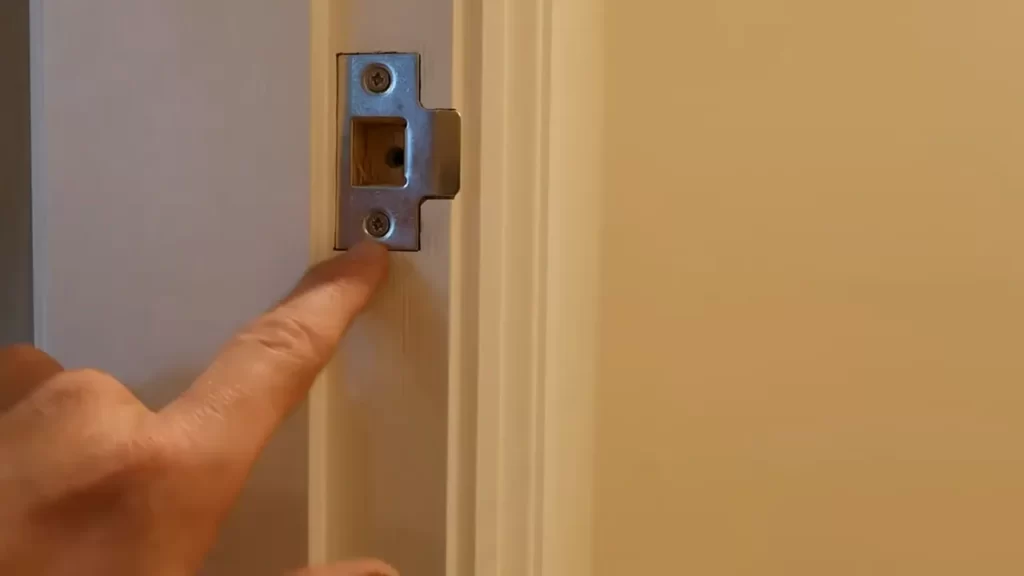
Choosing The Right Door Latch Plate
Installing a door latch plate is an important step in securing your doors and ensuring your privacy. The latch plate is the plate that attaches to the door frame and houses the latch in the correct position. It is essential to choose the right latch plate for your door, as it not only affects the functionality of the latch but also the overall security and appearance of your door. In this article, we will discuss the importance of selecting the correct latch plate, factors to consider when choosing one, and the common types of latch plates available in the market.
Importance of selecting the correct latch plate
When it comes to door security, selecting the correct latch plate is of utmost importance. The latch plate is responsible for holding the door securely in place when it is closed, preventing any unwanted entry or unauthorized access. Choosing the wrong latch plate can compromise the security of your door, making it easier for burglars or intruders to gain access to your property.
Moreover, the latch plate plays a crucial role in the overall functionality of the door latch. It ensures smooth operation and prevents unnecessary wear and tear on the latch mechanism. A properly installed latch plate ensures that the door can open and close smoothly without any sticking or jamming.
Factors to consider when choosing a latch plate
When selecting a latch plate for your door, there are several factors to consider to ensure the best fit and functionality:
- Door Thickness: The latch plate must be compatible with the thickness of your door. Measure the thickness accurately before purchasing a latch plate.
- Material: The latch plate is available in various materials such as stainless steel, brass, or nickel. Consider the level of durability and corrosion resistance required for your door.
- Finish: Choose a latch plate finish that matches the style and aesthetics of your door. Common finishes include satin nickel, polished brass, or oil-rubbed bronze.
- Screw Hole Alignment: Ensure that the latch plate has screw holes that align with the existing holes in your door frame, or be prepared to make new holes.
Common types of latch plates available in the market
There are several types of latch plates available in the market, each designed to fulfill a specific purpose. Here are some common types:
| Type | Description |
|---|---|
| Full Lip Latch Plate | A latch plate with a full lip that covers the entire strike plate, providing additional security. |
| T-Strike Latch Plate | A latch plate shaped like a T that is commonly used for interior doors. |
| Extended Lip Latch Plate | A latch plate with an extended lip that provides better alignment for the latch bolt. |
These are just a few examples of the latch plate types available. It is essential to choose the one that best suits your door and security requirements.
By considering these factors and choosing the right latch plate, you can enhance the security and functionality of your door. Take the time to research and select a latch plate that matches your specific needs, ensuring a secure and reliable solution for your door.
Measure And Prepare The Door
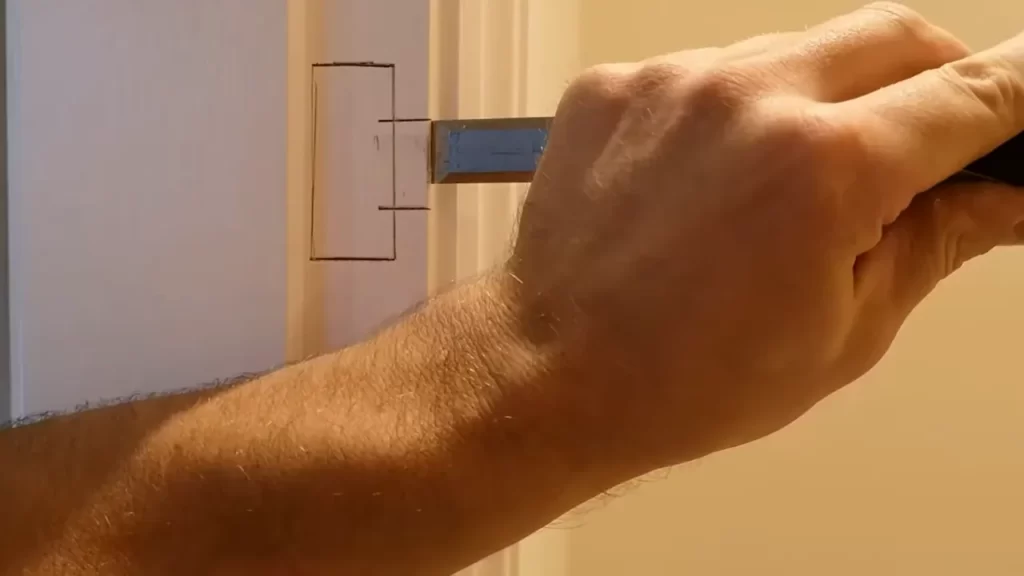
Before installing a door latch plate, it’s crucial to properly measure and prepare the door. This ensures that the latch plate is positioned correctly and securely. Here’s how to get started:
Measure the door to determine latch plate placement
First, measure the thickness of your door. Most doors have a standard thickness of 1-3/8 inches or 1-3/4 inches. Make sure to use a tape measure to get an accurate measurement. This will help determine the placement of the latch plate on the door.
Mark the position for the latch plate on the door using a pencil
Once you have determined the appropriate placement for the latch plate, use a pencil to mark the position on the door. This mark will serve as a guide during the installation process. Make sure the mark is visible and centered within the door frame to ensure proper alignment.
Prepare the door surface for installation by cleaning and sanding, if necessary
Before installing the latch plate, it’s important to ensure that the door surface is clean and smooth. Use a mild detergent and water to clean any dirt or debris from the door. If the surface is rough or has any imperfections, consider lightly sanding it to provide a better adhesive surface for the latch plate.
If your door has a finish or paint, take caution not to damage it while cleaning or sanding. Use a gentle touch and avoid using abrasive materials that could scratch or remove the finish.
By properly measuring and preparing the door, you set a solid foundation for the installation of the door latch plate. This attention to detail ensures that the latch plate will function properly and securely, giving you peace of mind knowing that your door is properly latched.
Installing The Latch Plate
When it comes to installing a door latch plate, it’s important to follow the proper steps to ensure a secure and functional door lock. The latch plate is an integral part of the door lock mechanism, as it holds the latch in place and allows the door to latch and lock securely. Here, we will walk you through the process of installing the latch plate, from gathering the necessary tools and materials to verifying the alignment and functionality of the latch plate.
Gather the necessary tools and materials for installation
Before you begin the installation process, make sure you have all the necessary tools and materials on hand. Gathering these items beforehand will help streamline the installation and make sure you have everything you need. Here’s a list of the tools and materials you’ll need:
- Screwdriver (Phillips or flathead, depending on the screws provided)
- Latch plate
- Screws (usually provided with the latch plate, but check the package)
- Masking tape
- Pencil or marker
Align the latch plate with the marked position on the door
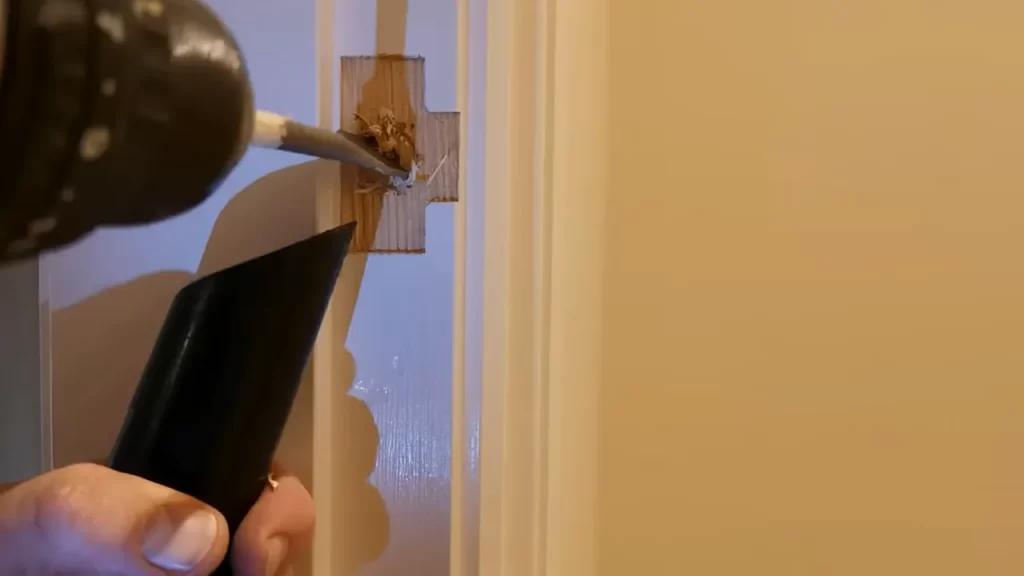
Once you have gathered all the necessary tools and materials, it’s time to align the latch plate with the marked position on the door. Start by marking the desired position of the latch plate on the edge of the door using a pencil or marker. Ensure that the latch plate lines up with the center of the door edge, usually indicated by a doorjamb mark.
Secure the latch plate in place using screws or a template provided
After aligning the latch plate, it’s time to secure it in place. Depending on the latch plate model, you may have either pre-drilled holes for screws or a template provided to help you with the installation. Carefully position the latch plate over the marked position and secure it using the provided screws. Make sure the latch plate sits flush against the door edge, ensuring a secure fit.
Verify the alignment and functionality of the latch plate
Once the latch plate is securely in place, it’s essential to verify its alignment and functionality. Close the door and test the latch by turning the door handle. Ensure that the latch fully engages with the strike plate on the door frame and that the door closes and latches smoothly.
By following these steps and taking the time to properly install the latch plate, you can ensure a secure and functional door lock. Remember to double-check the alignment and functionality of the latch plate, as this will play a crucial role in the overall security of your door.
Troubleshooting And Adjustments
During the installation process of a door latch plate, it is not uncommon to encounter certain issues. However, fret not! In this section, we will discuss the common problems faced and provide effective techniques for troubleshooting misaligned or malfunctioning latch plates. Additionally, we will share useful tips for making adjustments to ensure proper latch plate function.
Common issues faced during latch plate installation
While installing a door latch plate, you may come across several common issues. Identifying these issues and understanding their root causes will assist you in finding the best solutions. Here are some issues you might encounter:
- Latch plate misalignment: Sometimes, the latch plate may not align properly with the strike plate when the door is closed. This misalignment can prevent the latch from engaging correctly, leading to difficulty in opening or closing the door smoothly.
- Loose or wobbly latch plate: If the latch plate is not securely attached to the door frame, it can become loose or wobbly over time. This can cause the latch mechanism to malfunction or the door to rattle when closed.
- Sticky latch: Another issue you might face is a sticky latch. This occurs when the latch mechanism does not retract smoothly, making it challenging to open or close the door without excessive force.
Techniques for troubleshooting misaligned or malfunctioning latch plates
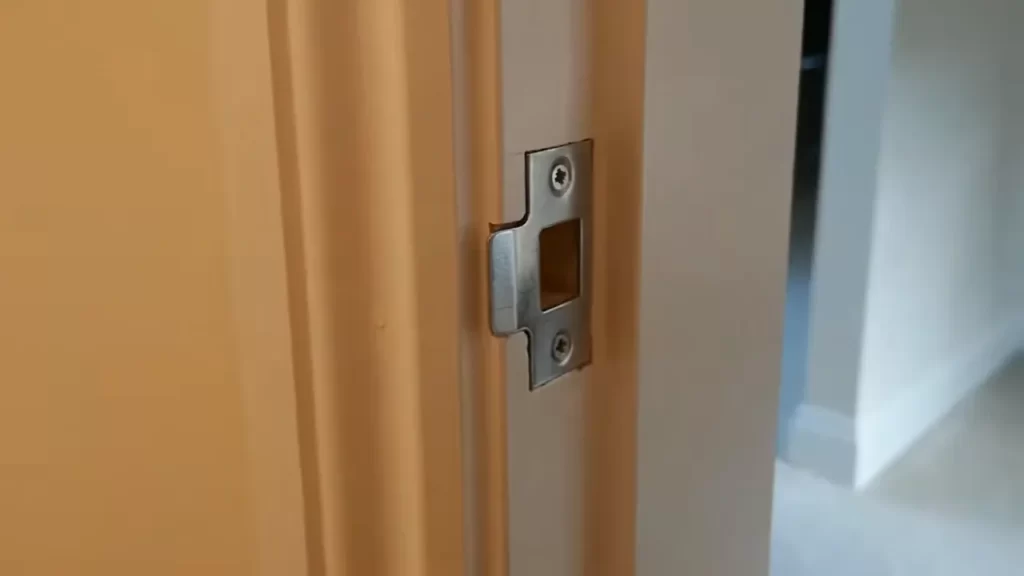
When faced with misaligned or malfunctioning latch plates, it is crucial to troubleshoot the problem promptly. Here are some techniques that can help resolve these issues:
- Check for misalignment: Use a screwdriver to remove the latch plate and examine its alignment with the strike plate. Adjust the positioning of the latch plate to ensure it aligns properly with the strike plate when the door is closed.
- Tighten screws: If the latch plate feels loose or wobbly, tighten the screws that secure it to the door frame. This will provide stability and prevent the latch plate from moving or shifting during use.
- Apply lubrication: In case of a sticky latch, applying a small amount of lubricant to the latch mechanism can alleviate the issue. Ensure you use a lubricant that is specifically designed for door locks and hinges.
Tips for making adjustments to ensure proper latch plate function
To guarantee the proper functioning of your latch plate, consider the following tips:
- Verify strike plate alignment: Ensure the strike plate is properly aligned with the door latch to allow for smooth engagement and disengagement of the mechanism.
- Test the latch operation: After installation, test the latch by opening and closing the door multiple times. Verify that it operates smoothly and securely latches without any sticking or resistance.
- Securely fasten screws: Double-check that all screws securing the latch plate and strike plate are tightly fastened. This will prevent any future issues arising from loose fittings.
By following these troubleshooting techniques and adjustments tips, you will be able to install and maintain a door latch plate with ease. Remember, the proper functioning of the latch plate is essential for security and convenience, ensuring your door operates smoothly and securely.
Enhancing Security And Aesthetics
Enhancing the security and aesthetics of your door is essential for creating a welcoming and secure entryway. One way to achieve this is by installing a door latch plate. This small yet important piece of hardware not only helps to keep your door securely closed but also adds a touch of style to your overall door design. In this section, we will explore additional security measures to complement the latch plate installation, consider door hardware options that enhance the overall appearance, and learn how to maintain and care for your latch plate for long-lasting performance.
Explore Additional Security Measures to Complement the Latch Plate Installation
While a door latch plate adds a layer of security to your door, there are other measures you can take to further enhance the safety of your entryway. Consider the following security enhancements:
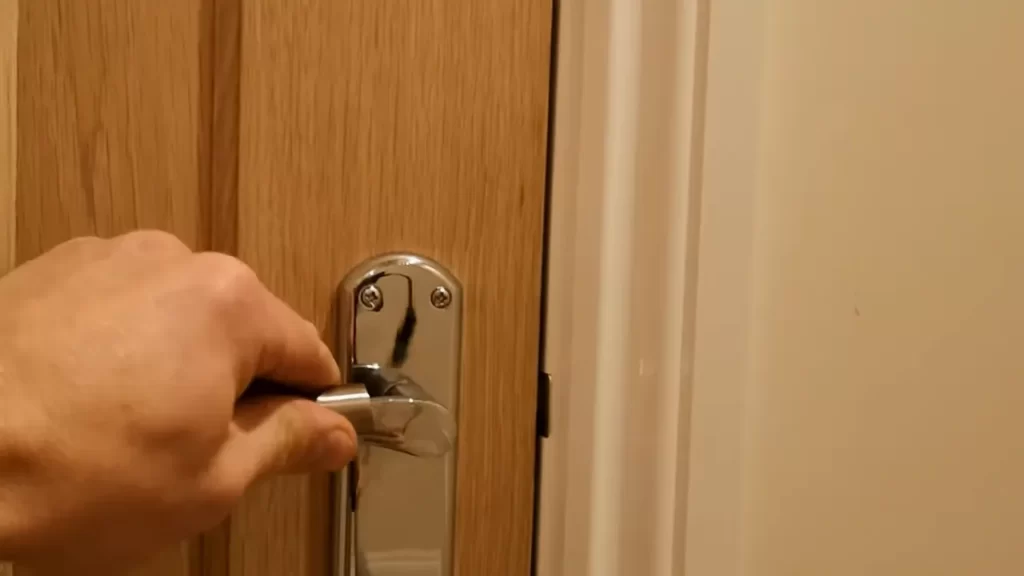
- Install a deadbolt lock for added strength and resistance against forced entry.
- Add a door viewer (peephole) to easily identify visitors before opening the door.
- Use door jamb reinforcement kits to reinforce the door frame and prevent kick-ins.
- Implement a security alarm system to deter potential intruders.
- Consider installing security cameras or smart doorbell systems for increased surveillance.
Consider Door Hardware Options that Enhance the Overall Appearance
When choosing a latch plate for your door, it’s important to consider the overall aesthetics of your entryway. The latch plate not only serves a functional purpose but can also enhance the visual appeal of your door. Here are some door hardware options to consider:
| Hardware Option | Description |
|---|---|
| Traditional Brass | Adds a classic and elegant touch to any door. |
| Modern Stainless Steel | Creates a sleek and contemporary look. |
| Antique Bronze | Brings a rustic and vintage charm to your entryway. |
| Black Iron | Offers a bold and industrial aesthetic. |
How to Maintain and Care for Your Latch Plate for Long-lasting Performance
To ensure the longevity and proper functioning of your door latch plate, it’s important to maintain and care for it regularly. Consider the following tips:
- Keep the latch plate clean by wiping it with a soft cloth regularly. Avoid using abrasive cleaners or solvents.
- Inspect the latch plate for any signs of wear or damage. Replace it if necessary.
- Ensure the latch plate is properly lubricated to prevent friction and ensure smooth operation. Use a silicone-based lubricant.
- Check the screws and bolts securing the latch plate regularly and tighten if necessary.
- Consider applying a protective coating or finish to the latch plate to prevent corrosion.
By following these maintenance tips, you can ensure that your door latch plate remains in optimal condition, providing both security and aesthetic value to your entryway.
Frequently Asked Questions For How To Install A Door Latch Plate
How Do You Install A Striker Plate?
To install a striker plate, follow these steps: 1. Close the door and mark the position of the latch on the door frame. 2. Use a chisel to create a recess for the striker plate, ensuring it aligns with the latch.
3. Screw the striker plate into place using the provided screws. 4. Test the door to ensure it latches properly. 5. Make any necessary adjustments for a secure fit.
How Do You Fix A Door Latch Plate?
To fix a door latch plate, follow these steps: 1. Remove the screws holding the plate in place. 2. Reposition the plate if it’s misaligned. 3. Tighten the screws securely. 4. Test the latch to ensure it’s functioning properly. 5.
If needed, replace the plate with a new one.
Do You Need A Door Latch Plate?
Yes, a door latch plate is necessary for proper functioning of the door latch. It helps secure the door and prevents it from opening unexpectedly.
How Do You Adjust A Door Latch Strike Plate?
To adjust a door latch strike plate, follow these steps: 1. Loosen the screws on the strike plate. 2. Move the strike plate up, down, left, or right, depending on the alignment needed. 3. Tighten the screws, ensuring the plate securely fits against the door jamb.
4. Test the door latch to ensure proper alignment and functionality. 5. Make any necessary adjustments until the latch operates smoothly.
How Do You Install A Door Latch Plate?
To install a door latch plate, remove the old plate, position the new one, mark the screw holes, and then drill and attach the plate securely to your door frame.
What Tools Do I Need For Installing A Door Latch Plate?
You will need a screwdriver, a drill with the appropriate drill bit, a measuring tape, a pencil for marking, and screws that are provided with the latch plate.
Conclusion
Installing a door latch plate is a simple and essential task for ensuring the security and functionality of your door. By following the step-by-step guide provided in this blog post, you can easily complete this task with minimal tools and effort.
Remember to measure accurately, position the latch plate correctly, and secure it tightly to guarantee a proper fit. With this knowledge in hand, you can confidently tackle any door latch plate installation project.
